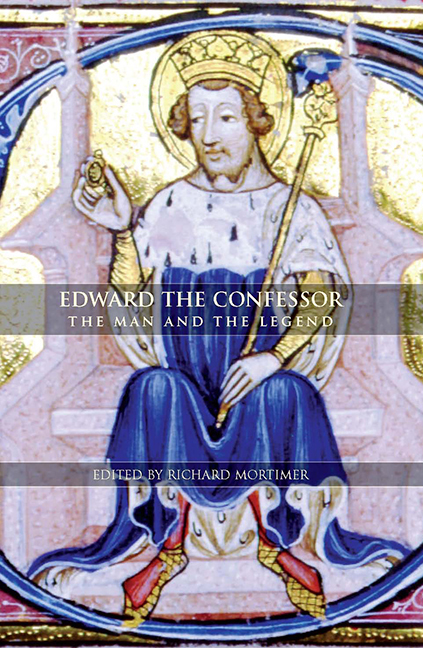Book contents
- Frontmatter
- Contents
- List of illustrations
- List of maps
- Preface
- Abbreviations
- Genealogical table
- 1 Edward the Confessor: the Man and the Legend
- 2 Edward the Ætheling (c. 1005–16)
- 3 Edward and Normandy
- 4 Edward the Confessor and the Succession Question
- 5 Edith, Edward's Wife and Queen
- 6 Edward the Confessor's Westminster Abbey
- 7 New Glimpses of Edward the Confessor's Abbey at Westminster
- 8 Craftsmen and Administrators in the Building of the Confessor's Abbey
- 9 The Sanctity and Canonisation of Edward the Confessor
- Bibliography
- Index
9 - The Sanctity and Canonisation of Edward the Confessor
Published online by Cambridge University Press: 25 October 2017
- Frontmatter
- Contents
- List of illustrations
- List of maps
- Preface
- Abbreviations
- Genealogical table
- 1 Edward the Confessor: the Man and the Legend
- 2 Edward the Ætheling (c. 1005–16)
- 3 Edward and Normandy
- 4 Edward the Confessor and the Succession Question
- 5 Edith, Edward's Wife and Queen
- 6 Edward the Confessor's Westminster Abbey
- 7 New Glimpses of Edward the Confessor's Abbey at Westminster
- 8 Craftsmen and Administrators in the Building of the Confessor's Abbey
- 9 The Sanctity and Canonisation of Edward the Confessor
- Bibliography
- Index
Summary
The historical circumstances of Edward's canonisation have been analysed in a detailed article by Bernhard W. Scholz, and were also presented in Frank Barlow's biography of the Confessor. The promulgation of Edward's sanctity was the result of a convergence of three interests: those of Westminster Abbey, of King Henry II and of Pope Alexander III. The different motives and arguments which stimulated this canonisation can be found in both the hagiographical discourse and the political constellation of the kingdom and the papacy.
In this paper I shall attempt to stress both the specifics and the novelties of this canonisation, which, we should remember, was the first papal recognition of an Anglo-Saxon saint. I shall analyse the canonisation from three points of view: the hagiographical discourse, with the accent put on the role of Westminster; the dynastic interests; and the role of the papacy.
The hagiographical discourse
IN THE HAGIOGRAPHICAL DISCOURSE concerning Edward, three themes seem particularly associated with the canonisation: the birth of a new type of royal sanctity, the connections with St Peter and Rome, and the connections with royal sainthood.
A new type of royal sainthood
Several English and French studies have pointed out that the construction of Edward's sanctity was progressive in the writings about his life. The Vita Edwardi, probably written in the short reign of Harold, was not yet hagiographical. It was not until 1138 that Osbert of Clare, a monk of Westminster, wrote an actual hagiographical Life, amplified with miraculous and legendary elements. Nevertheless the anonymous Vita already contained elements of the representation of a holy king who was neither martyr nor monk. This ideal was to become the model for the new type of holy king in the twelfth century.
More than twenty years after Osbert, Ailred of Rievaulx was commissioned to write a new Life which came to be the official one, and was used thereafter to provide the lections for the feast of Edward at Westminster.
- Type
- Chapter
- Information
- Edward the ConfessorThe Man and the Legend, pp. 173 - 186Publisher: Boydell & BrewerPrint publication year: 2009

